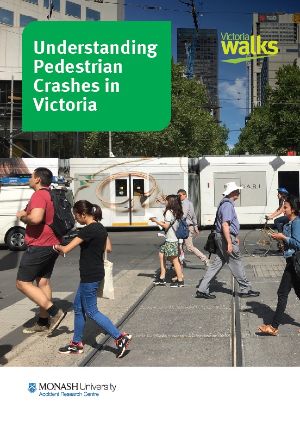30 Jul 2020

At least 7,000 pedestrians have been hit by ‘offending’ drivers over ten years, according to Police data in the most comprehensive analysis of pedestrian crashes ever produced in the state.
Victoria Walks is calling for immediate action for drivers to be more vigilant around people walking, with drivers breaking road rules more often than not in pedestrian crashes, according to Victoria Police. Alarmingly, in 15 per cent of crashes involving pedestrians, drivers fled the scene.
“Leaving someone injured on the side of the road is pretty despicable,” says Ben Rossiter, Executive Officer of Victoria Walks. “We need strong enforcement for those cases and things like distracted driving. We also need better education of drivers on the need to give way to pedestrians when turning.”
“With the higher levels of local walking during the COVID-19 pandemic likely to continue, we need to invest in pedestrian road safety now and into the recovery phase,” Dr Rossiter said.
The research, undertaken by the Monash University Accident Research Centre (MUARC) and funded by a TAC Community Road Safety Grant, analysed police, TAC and hospital data.
In total, more than 2,000 pedestrians are admitted to hospital or present to Emergency Departments each year.
Professor Jennie Oxley, lead author of the report, said increasing sales of vehicles with blunt and high frontal structures like SUVs, 4WD and some utes were a concern, because they increased risk of pedestrian injury compared to conventional cars. “People are hit higher on their body, so they are more likely to suffer serious head, abdominal or spinal injuries and they are more likely to be run over by the vehicle.”
Slater and Gordon Practice Group Leader Susan Accary said pedestrian injuries were Victoria’s hidden road toll, with many people suffering long-term effects after being hit. “We mainly hear about reports of 'pedestrian incidents' and fatalities but the reality is that too many Victorians suffer lifelong impacts after being hit by vehicles when doing nothing wrong.”
Louise Walters was crossing at traffic lights in Geelong when she was hit by a turning driver – a common crash scenario.
“I was doing all the right things. I had the green man at the pedestrian crossing before I started walking.
“The impact has been huge. Even though I’m walking without a stick. I’m not sure if I’ll ever run, jump, hop or skip again.”
The research suggests arterial roads are a key problem – more pedestrians are hit in 60 km/h zones than any other. “We need better provision for crossing main roads in the suburbs, especially around shopping areas, schools, train stations and universities,” Dr Rossiter says.
The research found that mainly due to their comparative frailty, pedestrians aged 70 years and older have the greatest risk of injury, roughly 1.6 times higher than young adults (16 to 39 years). “We need to build a road network that takes care of our most vulnerable community members,” Dr Rossiter says.
“When the growth of Melbourne is considered, walking is getting safer, with fewer injuries per head of population,” Jennie Oxley says. “However, previous progress in reducing the total number of pedestrian injuries has plateaued – the high number of pedestrians admitted to hospital persists.”
Professor Oxley said traffic speed is a key issue. “It has been estimated that fatal and serious injury crashes involving pedestrians were reduced by 25 to 40 percent when the default speed limit was reduced from 60km/h to 50km/h in 2001.”
The report identifies opportunities to make real changes that will drive down deaths and serious injuries. The first recommendation is reductions in speed limits, including to 30km/h in areas of high pedestrian activity and residential streets.
“If we are going to make real progress to reduce the pedestrian toll, we need further government action, including reducing speed limits in urban areas, investing in crossings and driver education,” Dr Rossiter said. “Many councils are doing good work, but we need government investment to scale it up.”
Media coverage:
